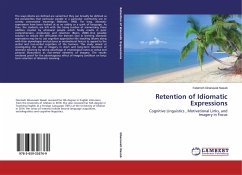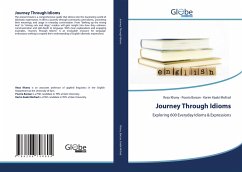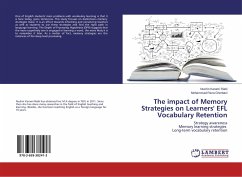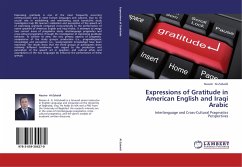
Retention of Idiomatic Expressions
Cognitive Linguistics , Motivational Links, and Imagery in Focus
Versandkostenfrei!
Versandfertig in 6-10 Tagen
36,99 €
inkl. MwSt.

PAYBACK Punkte
18 °P sammeln!
The ways idioms are defined are varied but they can broadly be defined as the peculiarities that particular people in a particular community use to convey connotative meanings (Webster, 1993). For long, idiomatic expressions have been looked at as an oddity or a quirk of language. As thus, the students are left with the heavy burden of memorizing these oddities created by whimsical people which finally results in poor comprehension, production and retention (Boers, 2000). One possible solution to reduce the difficulties the learners face in learning idiomatic expressions may be to use cognitiv...
The ways idioms are defined are varied but they can broadly be defined as the peculiarities that particular people in a particular community use to convey connotative meanings (Webster, 1993). For long, idiomatic expressions have been looked at as an oddity or a quirk of language. As thus, the students are left with the heavy burden of memorizing these oddities created by whimsical people which finally results in poor comprehension, production and retention (Boers, 2000). One possible solution to reduce the difficulties the learners face in learning idiomatic expressions may be to use cognitive approaches like teaching idioms along with their etymologies and pictures as motivational factors to appeal to the verbal and non-verbal cognition of the learners. This study aimed at investigating the role of imagery in short and long-term retention of idiomatic meaning by taking advantage of etymological notes as verbal and pictorial illustrations as non-verbal elements of imagery. The results rendered proof for the advantageous effect of imagery condition on long-term retention of idiomatic meaning.












